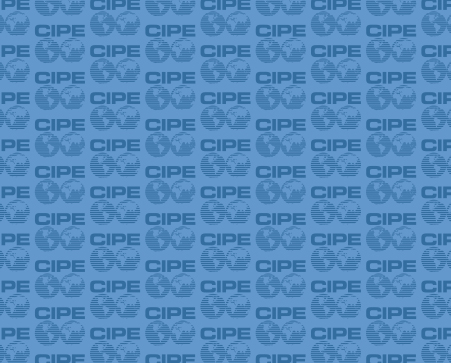
When the lights went down and the countdown to going live on the air began, everyone in the room knew they were witnessing history — the first ever debate among presidential candidates in Argentina.
It was a long, hard negotiation process that brought the candidates to the debate table. The debate was not without its flaws. The biggest of course was the decision of the leading candidate, Daniel Scioli, representing the current governing party (the Front for Victory), to not attend even after participating in all the negotiations leading up to the debate. Still, the room was electric and the audience complied with all the rules they were asked to abide by, including refraining from clapping or cheering for their favorite candidate.
The five candidates who did participate (Mauricio Macri, Sergio Massa, Margaret Stolbizer, Adolfo Rodriguez Saá and Nicolás del Caño) took advantage of the empty lectern representing the missing candidate, faulting him for disrespecting them and the people of Argentina by his failure to show up.
The debate was organized by Argentina Debate, a consortium of Argentine nonprofit, educational and private sector groups. They had seen this happen before. Four years ago when Cristina Fernández was campaigning for reelection she also decided not to participate in a debate after her popularity in public opinion polls skyrocketed. The debate never took place. CIPE supports one of the organizers of the process, the Center for the Implementation of Public Policies Promoting Equity and Growth (CIPPEC), and the disappointment at that time was palpable.
One of the key aims CIPPEC set out in the four years leading up to this year’s debate, which took place on October 4, was to raise the cost of not participating. In other words, they sought to create more public demand for presidential debates so that candidates who choose not to participate pay a political price for that decision. In fact, only two countries in the Western Hemisphere have not had a tradition of presidential debates: the Dominican Republic and Argentina. It remains to be seen what the political price for Daniel Scioli might be in this race, but many media outlets and online commentators were harshly critical of his decision.
The debate was structured around four key themes: Economic and Human Development, Education and Children, Security and Human Rights, and Strengthening Democracy. The candidates were each allowed two minutes to present their ideas. That was followed by a 30 second question posed by one of the candidates to the presenter, who then had 30 seconds to respond. Daniel Scioli’s time was divided up and given to the other candidates in 30 second increments. Most of the candidates used those 30 seconds to criticize Scioli for not attending.
It is easy to criticize how debates are organized or point out how they can be made better, but the fact that this one took place at all is an important step forward for democracy in Argentina. Hopefully, it will lead to further debates at all levels of the political process, using different formats to display the different positions and abilities of candidates. The candidates in this debate explained their positions and were respectful of each other in their interactions. In that respect it was a democratic process of which other countries should take note.
John Zemko is Regional Director for Latin America & the Caribbean at CIPE.
Published Date: October 07, 2015
